Understanding Sex Education: Importance and Need in India
Sex education is the process of teaching individuals about human sexuality, including topics like human sexual anatomy, sexual activity, sexual
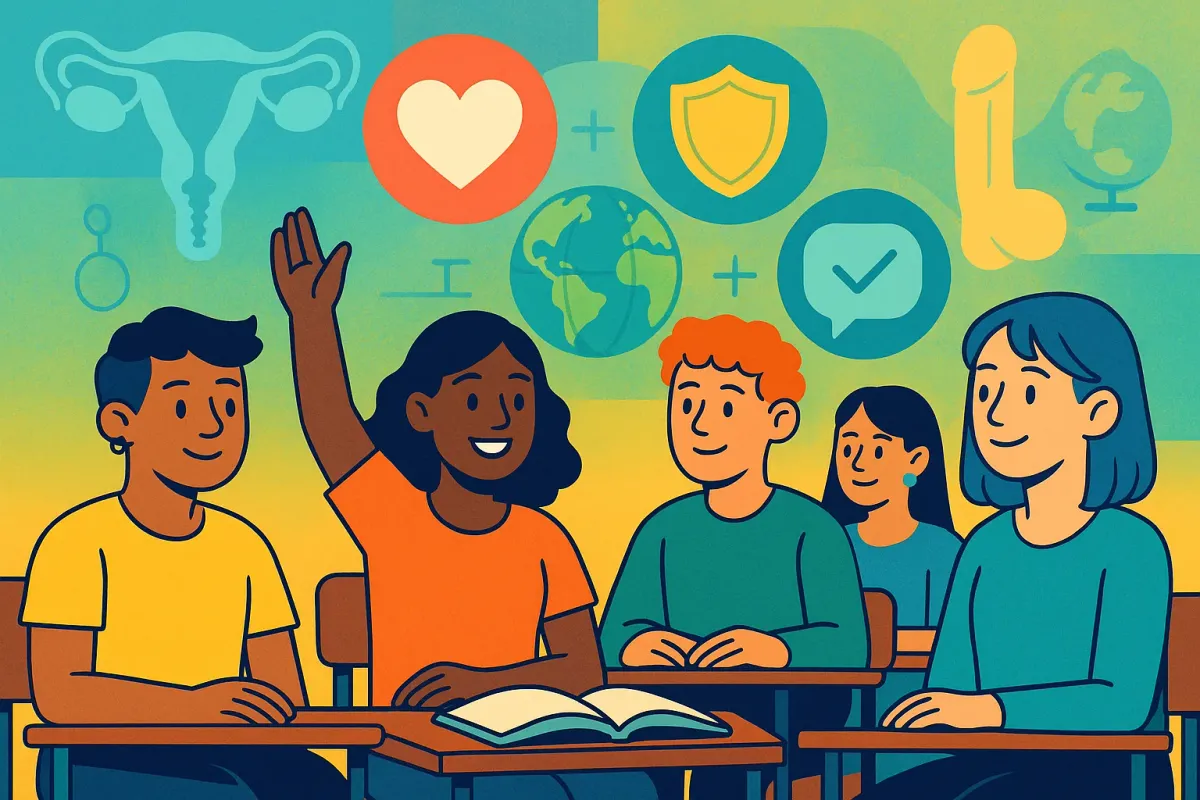
What is Sex Education?
Sex education is the process of teaching individuals about human sexuality, including topics like human sexual anatomy, sexual activity, sexual reproduction, safe sex, birth control, sexual health, reproductive health, emotional relations, emotional responsibilities, age of consent, and reproductive rights. It aims to provide accurate, age-appropriate information to help people make informed decisions about their bodies, relationships, and overall well-being. In simple terms, it helps individuals understand:
- How their bodies work, especially during puberty.
- How to stay safe and healthy, including preventing diseases like HIV/AIDS.
- The importance of mutual respect and consent in relationships.
- How to make responsible choices about relationships and sexual activity.
Sex education is not just about biology; it also covers emotional, social, and psychological aspects of sexuality. It can be delivered through schools, parents, community programs, or online platforms, ensuring individuals are equipped to navigate their sexual health and relationships responsibly.
Why is Sex Education Important?
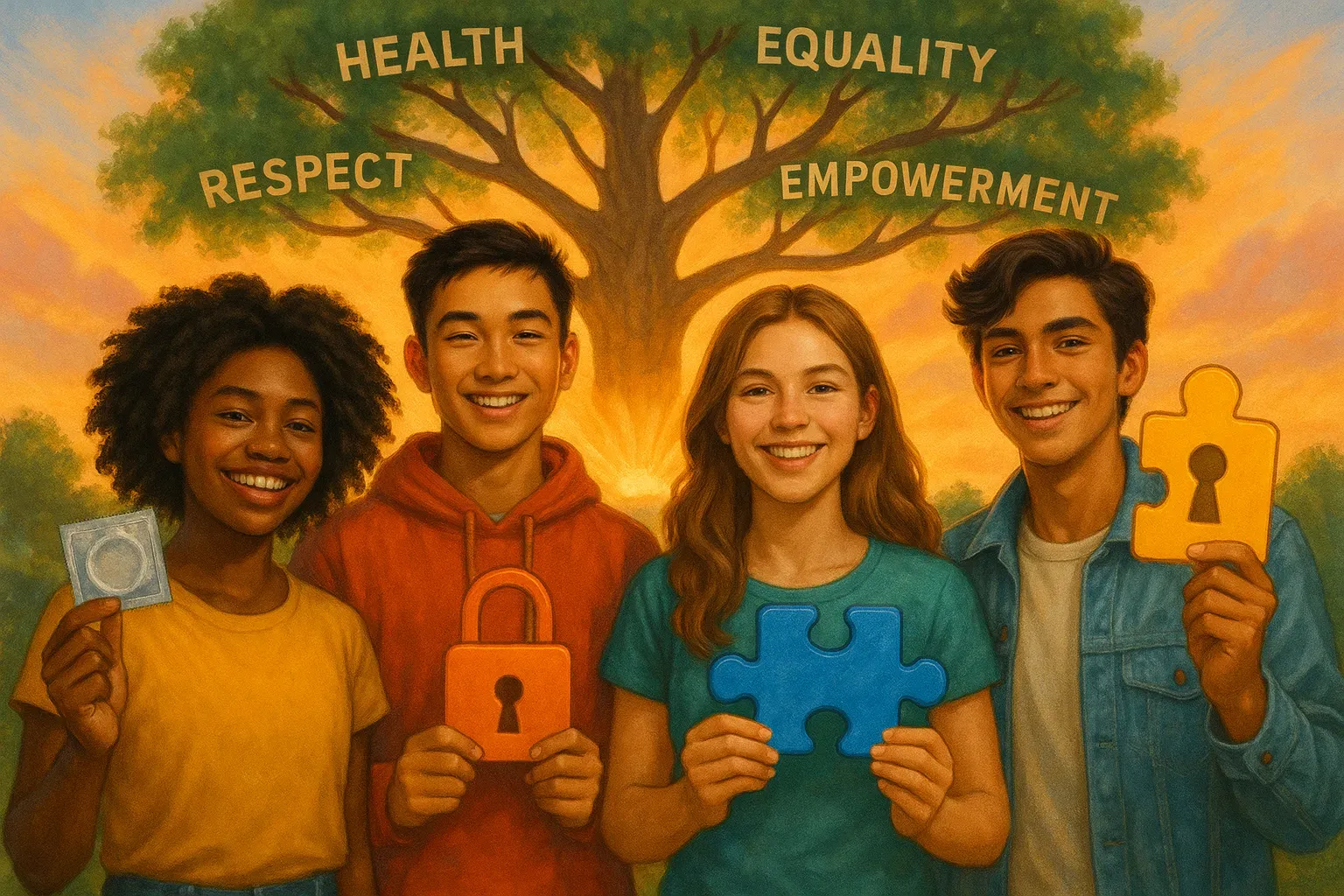
Sex education is crucial for several reasons, as supported by organizations like the World Health Organization (WHO) and UNESCO:
- Promotes Healthy Choices: It teaches safe practices, such as using protection, to prevent sexually transmitted infections (STIs) and unplanned pregnancies.
- Builds Awareness of Consent: It emphasizes mutual agreement in relationships, helping reduce cases of abuse or coercion.
- Reduces Myths and Misconceptions: Many young people get wrong information from peers, the internet, or the media. Sex education provides factual knowledge to clear up myths.
- Supports Emotional Well-being: Understanding relationships and emotions helps individuals build healthy, respectful connections.
- Prepares for Puberty: It educates about physical and emotional changes during puberty, reducing fear or confusion.
- Encourages Gender Equality: It promotes respect for all genders and challenges harmful stereotypes, addressing issues like gender-based violence.
- Delaying Sexual Activity: Research shows that comprehensive sex education can delay the onset of sexual activity and encourage safer practices when individuals become sexually active.
- Reduces Risks of Violence and Exploitation: By teaching about consent and bodily autonomy, it helps protect individuals from abuse and exploitation.
The Condition of Sex Education in India
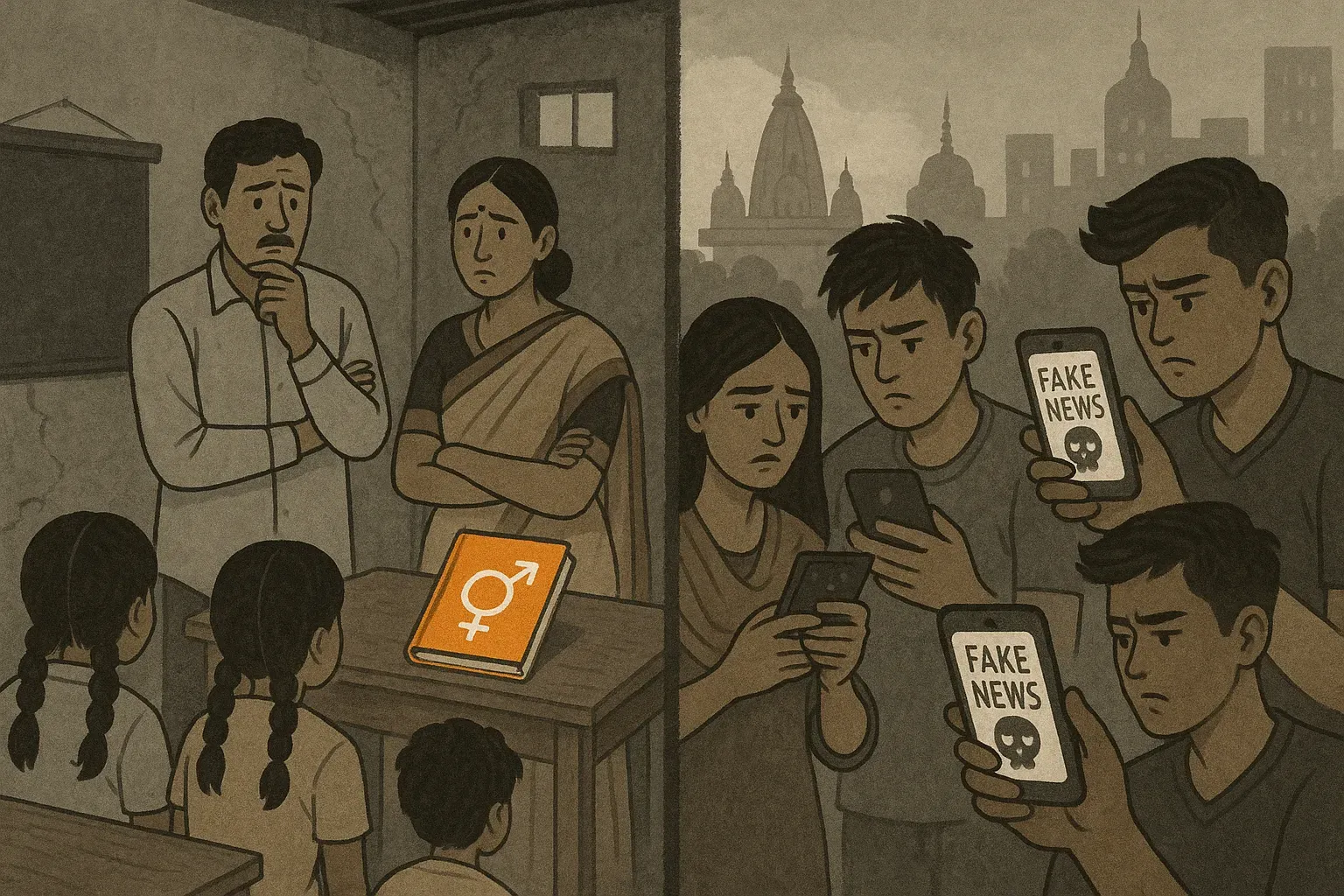
In India, sex education is a sensitive and controversial topic, shaped by cultural, social, and political factors. Several challenges hinder its implementation:
- Cultural Taboos: Talking about sex is considered taboo in many Indian communities, making parents, teachers, and policymakers uncomfortable discussing it openly.
- Lack of Formal Curriculum: Sex education is not consistently included in school curricula. Some schools teach basic biology (e.g., reproduction or menstrual hygiene), often separately for boys and girls, but topics like consent, relationships, or safe practices are frequently ignored.
- Misinformation: Many young people rely on unverified sources like social media, peers, pornography, or movies, leading to myths and misconceptions that can promote misogyny or unsafe behaviors.
- Gender Inequality: Issues like gender-based violence, child marriage, and lack of awareness about consent are prevalent, exacerbated by the absence of proper education.
- Health Risks: India has high rates of STIs, HIV/AIDS, and unplanned pregnancies, particularly among young people, partly due to low contraception use (e.g., only 7.1% among married women aged 15–19, per 1992–1993 surveys).
- Resistance from Society: Some groups, including political leaders in states like Gujarat and Maharashtra, oppose sex education, believing it encourages promiscuity or contradicts Indian cultural values. For example, in 2016, the BJP government in Madhya Pradesh banned it, favoring yoga instead.
- Urban-Rural Divide: Urban areas may have better awareness due to education and global exposure, but rural areas, with about 190 million adolescents (many illiterate), lack access to reproductive health education, especially for girls.
- Teacher and Parental Reluctance: Teachers often avoid teaching these topics due to a lack of training or fear of backlash, while parents find it embarrassing, reinforcing societal stigma.
Despite these challenges, efforts like the Adolescence Education Programme (AEP), the Udaan program in Jharkhand (since 2006), and initiatives under Ayushman Bharat (2018) show progress, though implementation remains uneven, particularly in rural areas.
Why Sex Education Should Be Introduced in India
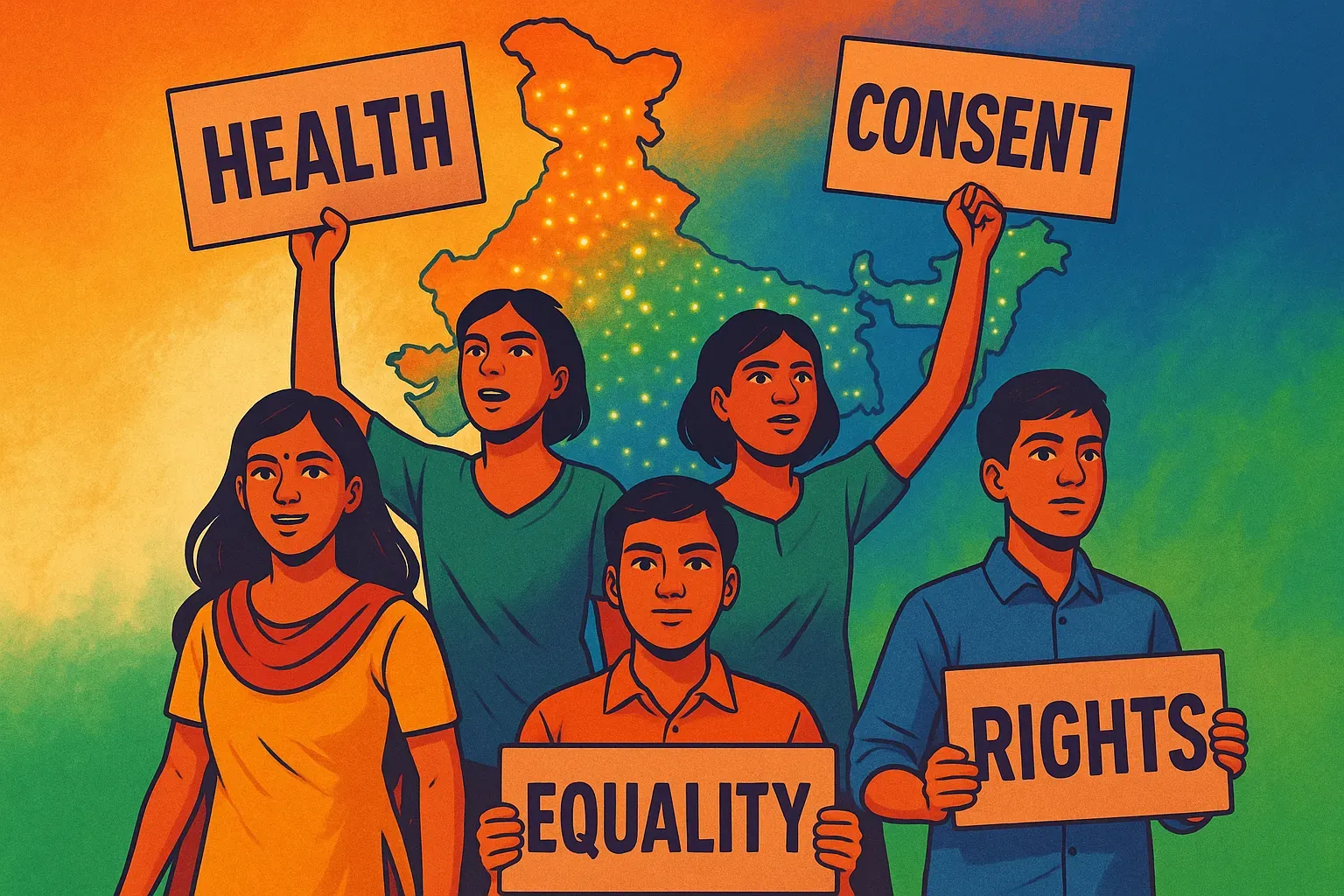
Introducing comprehensive sex education in India is essential to address these challenges and improve public health and social outcomes. Key reasons include:
- Reducing Health Risks: Proper education can lower rates of STIs, HIV/AIDS, and unplanned pregnancies by teaching safe practices and the importance of contraception, addressing the high incidence noted in health surveys.
- Empowering Youth: Knowledge about their bodies and rights helps young people make informed choices, reducing risks of exploitation or abuse, critical given the 18% prevalence of child sexual abuse among girls globally (WHO).
- Promoting Gender Equality: Sex education can challenge harmful gender norms, reduce gender-based violence (up to 89% lifetime prevalence in some regions), and promote respect between genders.
- Preventing Child Marriage: Educating about rights and consequences of early marriage can delay marriages, improving health outcomes for girls.
- Addressing Sexual Violence: Teaching about consent and boundaries can reduce sexual harassment and assault, providing vocabulary in regional languages to discuss these issues.
- Breaking Taboos: Normalizing discussions about sex and relationships creates a healthier, more open society where young people feel safe asking questions.
- Preparing for Modern Challenges: With early exposure to sexual content via the internet and media, sex education ensures youth have the tools to navigate this responsibly, countering misinformation from social media or pornography.
- Aligning with Global Standards: Comprehensive sexuality education, as outlined by UNESCO’s International Technical Guidance on Sexuality Education (2018), supports lifelong health and rights, a model India can adopt.
How Can Sex Education Be Implemented in India?
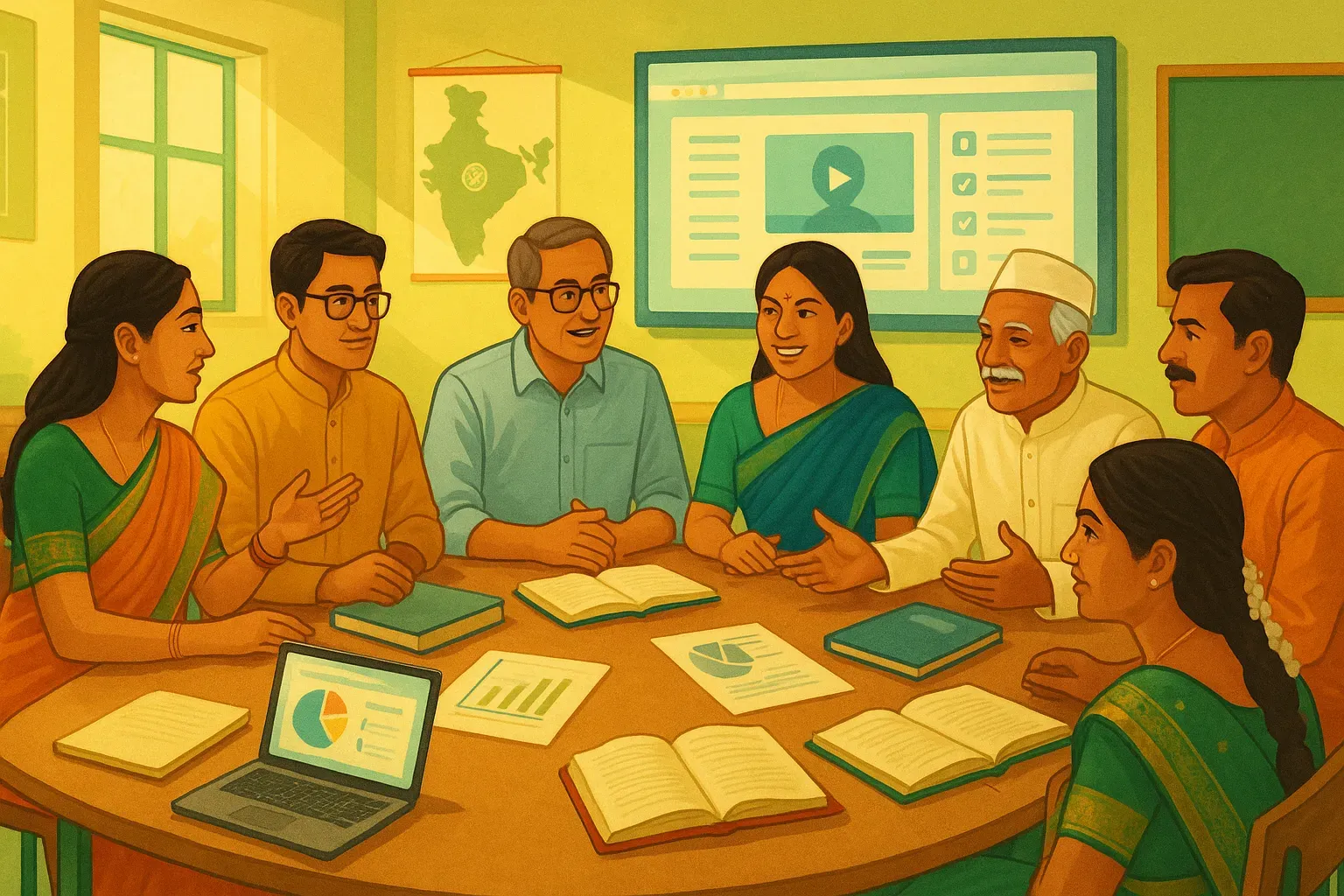
To make sex education effective in India, the following strategies can be adopted, tailored to the local context:
- Age-Appropriate Curriculum: Design programs for different age groups, starting with body awareness and consent basics for young children (ages 5–8) and progressing to contraception and STIs for teenagers (ages 15–18), per WHO guidelines.
- Teacher Training: Train educators to deliver sex education confidently and sensitively, addressing cultural concerns while providing accurate, science-based information.
- Parental Involvement: Educate parents to reduce resistance and encourage open discussions with their children, countering stigma and embarrassment.
- Community Programs: Use NGOs and community centers to reach rural and underserved areas, ensuring access for illiterate adolescents and girls.
- Use of Technology: Leverage online platforms and apps for accessible, private learning, addressing modern challenges like internet exposure.
- Government Support: Prioritize a national sex education curriculum, overcoming state-level bans (e.g., in Gujarat and Maharashtra), with policymakers ensuring consistent implementation.
- Consultation with Stakeholders: Engage experts, parents, and youth to design culturally sensitive programs, as recommended by UNFPA, to ensure acceptance and effectiveness.
Conclusion
Sex education is not just about teaching biology; it’s about equipping young people with the knowledge and skills to lead healthy, respectful, and empowered lives. In India, cultural taboos, misinformation, and societal resistance create significant barriers, but the evidence suggests that comprehensive sex education is essential to address high rates of STIs, unplanned pregnancies, child marriage, and gender-based violence. By promoting health, empowering youth, and breaking taboos, sex education can build a more informed and equitable society. With tailored curricula, trained educators, and community engagement, India can overcome challenges and align with global standards, ensuring every young person has the tools to thrive.
References:
- World Health Organization: Comprehensive Sexuality Education
- Wikipedia: Sex Education in India
- UNFPA: Comprehensive Sexuality Education
- UNESCO: International Technical Guidance on Sexuality Education (2018)
Thanks, and join our whatsapp community for the latest updates.

Thanks, and share.


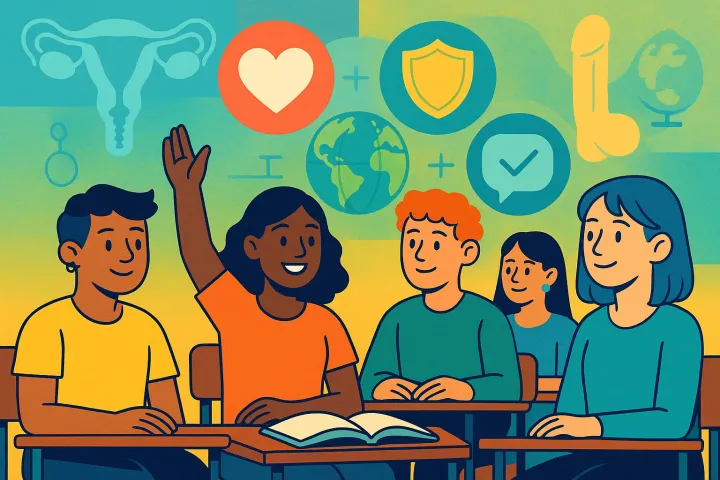
Comments ()